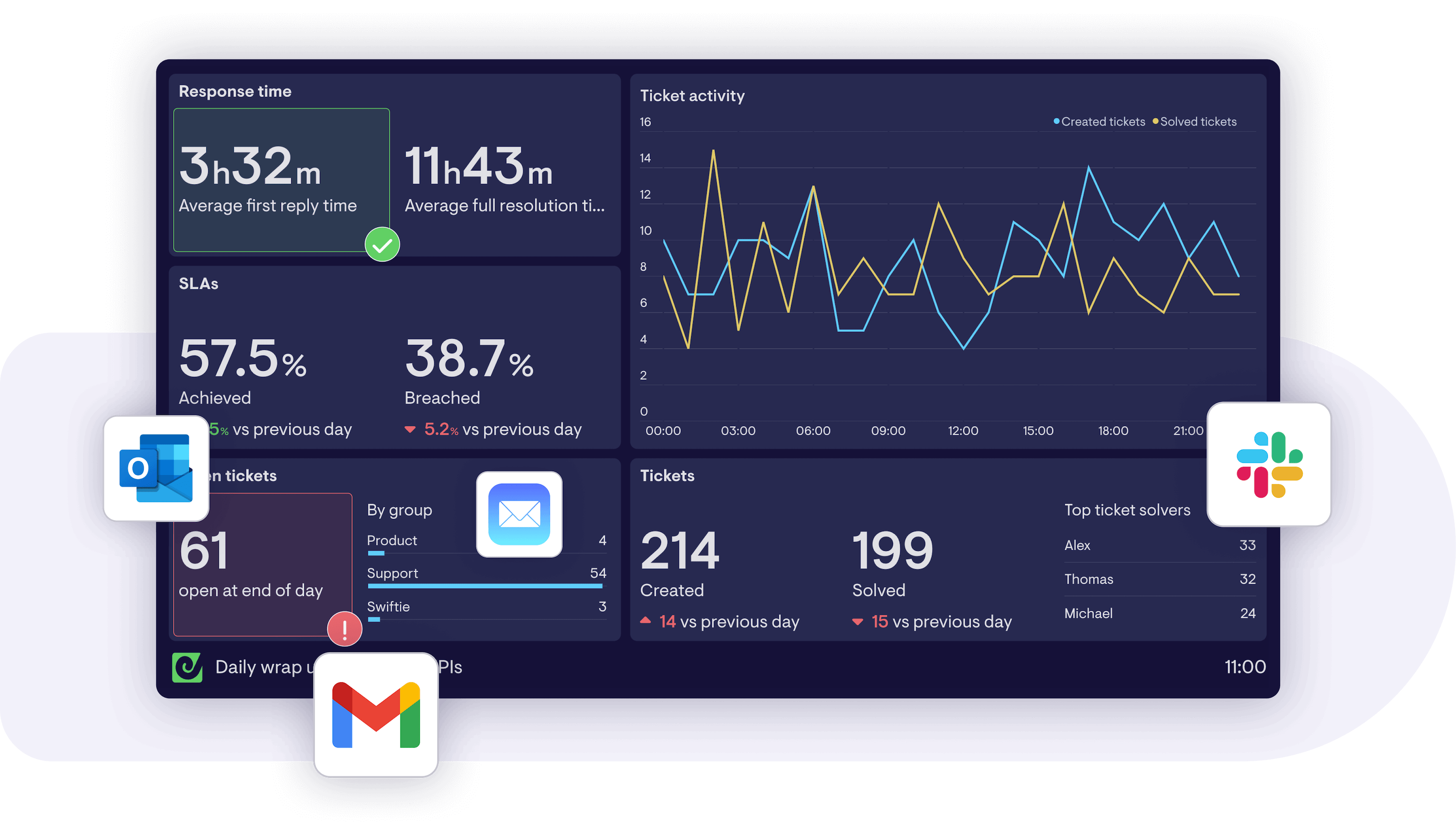It’s often challenging to keep agents and stakeholders in the loop with what’s happening in your Zendesk account.
Perhaps you’re using Zendesk Explore to keep track of things yourself, but giving anyone else access comes with some serious question marks over permissions, extra spending on licenses, or indeed whether anyone will be able to decipher your complex queries.
Maybe you’re yet to set up any form of reporting or KPI tracking.
Or, if you’re one of Geckoboard’s many happy customers, you might be using real-time dashboards to keep track of live Zendesk data throughout the day, but you’re yet to share your dashboards with anyone else in your organization.
If any of these scenarios ring true for you and you’re looking for a quick, effective way to get more eyes on key performance data, then putting together a simple, automated system for sending out regular snapshots of your team’s performance could be a game changer.
We’ll run through how to do this below, but first; what are performance snapshots anyway?
What are performance snapshots?
If you’ve got your monthly reporting down using Zendesk Explore, and your day-to-day monitoring of live metrics sorted with Geckoboard, you might be wondering how performance snapshots fit in. Isn’t that a lot of data to be keeping on top of?
Unlike dashboards that you need to click into in your browser, or look up at if they’re up on a screen, a performance snapshot is a concise, visual digest of important data that comes to you at regular intervals, automatically over Slack or email.
Or really I should say, goes to specific agents and stakeholders. Because another key difference that sets performance snapshots apart from other forms of data consumption, is that they’re specifically designed to be delivered to others in your organization who might not ordinarily have access to data in Zendesk or any BI tool connected to it.
Exactly what’s communicated in a snapshot depends on the KPIs that are important to the success of your customer support team. You might want to summarize how the team’s tracking against certain performance goals, like first response time, one-touch resolution rate, or CSAT. Perhaps it’s useful for stakeholders to see how many tickets have been created day-to-day with specific tags applied to them, which might indicate a bug or other issue another team is responsible for.
Whatever is on there, a regular, automated snapshot, going out to the right people at the right time is going to be a powerful way to increase visibility of that data and bring others along on your team’s journey.
Four performance snapshot examples
Wondering how and when a snapshot might be useful? Here are four scenarios when a regular snapshot of your Zendesk KPIs - delivered at a specific time - can have a significant impact on how your team works.
Set the tone in the morning
Picture it.
It’s 9am. You’ve just placed your mug of coffee on your desk, fired up your laptop, and clicked one of the many browser tabs with 'Z' on them to fire up your ticket queue. The whole day is in front of you, ripe with opportunities to help and guide your customers. It’s going to be an aweso….. Oh.
That perfectly manageable backlog you thought you could get through before lunch has somehow exploded overnight into pages of new tickets.
A snapshot of a dashboard isn’t going to get through your tickets in this scenario. But if it's delivered to your team’s Slack channel before you’ve started your day, it will help you get a head start on identifying that there’s an issue in the first instance, and figuring out a plan of attack together.
And even if things are business-as-usual, reviewing a daily snapshot in the morning before getting stuck into the day’s tasks - perhaps as part of a daily standup - can help steer you and your agents towards areas that might need that little bit more attention to keep your operation performing at its best.
End of day wrap-up
A lot can happen throughout the day, and for the most part, agents will have had their heads down helping customers rather than trying to understand the bigger picture. Which is why wrapping the day up with a snapshot, sent out towards the end of the shift, can be a great way for everyone on the team to quickly check in with high-level KPIs and see the impact they’ve made.
Some useful data to surface in a daily wrap-up includes:
- Number of tickets solved today (total, or broken out by tag)
- Top ticket solvers for the day
- Average First Response Time today
- Number of SLAs achieved or breached
- CSAT comments that have come in through the day
Handovers between teams
If your support operation is spread out across multiple timezones, and/or different tiers of support, and/or outsourced and in-house agents, then anything you can do to keep everyone in sync is going to be a big win.
Much like setting the tone in the morning, a snapshot of the state of play at the point of handover between two teams can go a long way towards ensuring a smooth transition, and get the new shift off to the best possible start.
Keeping other teams in the loop
It’s not just agents who benefit from an easy-to-digest summary. Snapshots are a great way to share regular performance updates with upper management, managers of other teams, and other stakeholders with an interest in how Support is doing.
On particularly busy days, they’re a great reminder of the hard work the team’s put in too!
How to automate performance snapshots with Geckoboard
Summarizing Zendesk KPIs on a dashboard, and sending that out automatically at a set time every day might sound like more hassle than its worth. But a tool like Geckoboard can make it easy enough to set up in an afternoon.
Geckoboard allows Zendesk admins to streamline the whole snapshot automation process - from visualising the data you care about from Zendesk, right through to sending an email out with a screenshot of your dashboard (and if you use Slack, you can post them to a specific channel too).
Here’s how you can do this yourself in as little as 30 minutes, start to finish.
1. Sign up to Geckoboard
To get things going, start a free trial with Geckoboard.
It’s free for 14 days, during which you can build as many dashboards as you like, using any of its 80+ integrations. You don’t need to put in any payment details up front, so if you don’t want to continue once the trial is ended you’re not going to have any surprise charges.
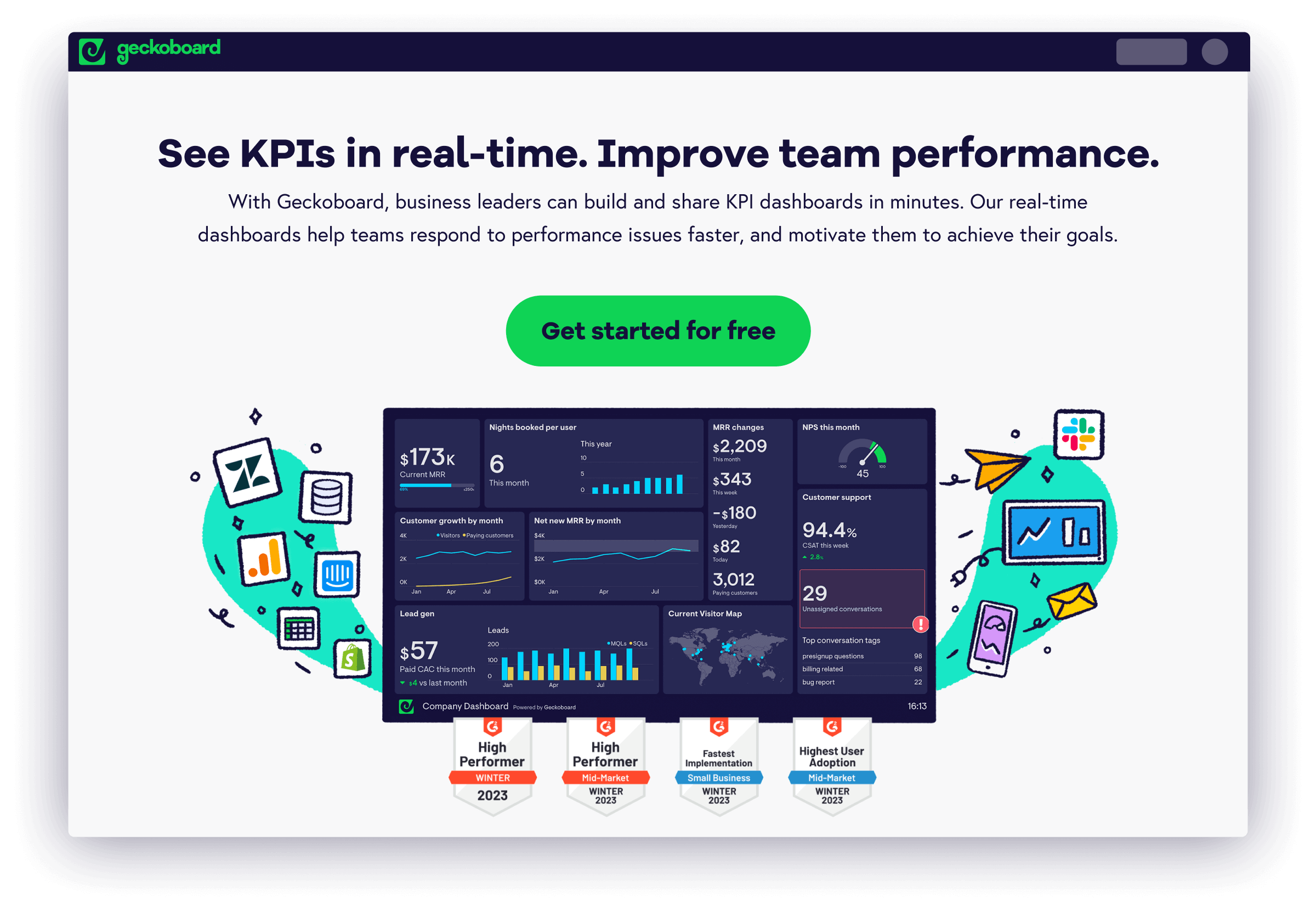
2. Connect Zendesk to pull in data
To connect your data, just select any of the Zendesk options such as Zendesk Support, Zendesk Talk, Zendesk Chat or Zendesk Sell. Then follow the steps to start pulling live data into Geckoboard.
3. Build widgets
Once your Zendesk account is connected to Geckoboard, you can start adding ‘widgets’ to your new dashboard. Widgets are visualizations of your metrics, which update automatically at least every 10 minutes to ensure you’re always seeing fresh data. That’s 6x quicker than Zendesk Explore which only refreshes your data hourly or daily (depending on your plan).
Geckoboard’s widgets are designed to be easy for everyone to understand, and come in several different forms, including simple numbers, bar charts, leaderboards, line charts and gauges.
If you want to draw attention to certain metrics when they’re performing particularly well or poorly, you can do that too, using ‘status indicators’.
These will change the colors on your widget if your data swings beyond the criteria you set - great for highlighting when things like unassigned tickets or first response times are creeping in the wrong direction, or celebrating successes like a record average CSAT score for the week.
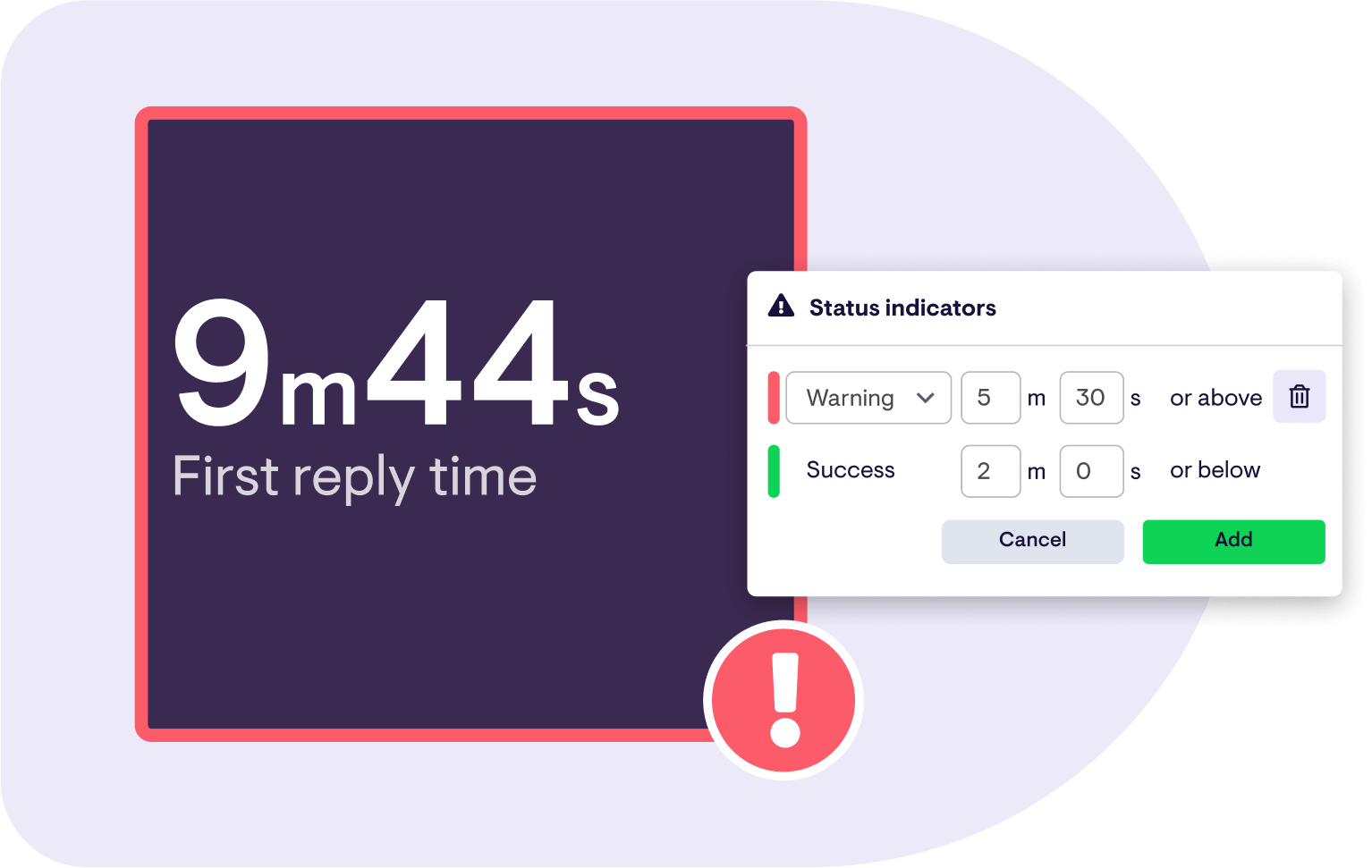
For some inspiration, check out these Zendesk dashboard examples built with Geckoboard.
4. Schedule snapshots
With a handful of widgets on your dashboard - between 5 and 15 is usually the sweet spot - you’ll be ready to schedule your first snapshots to be sent out.
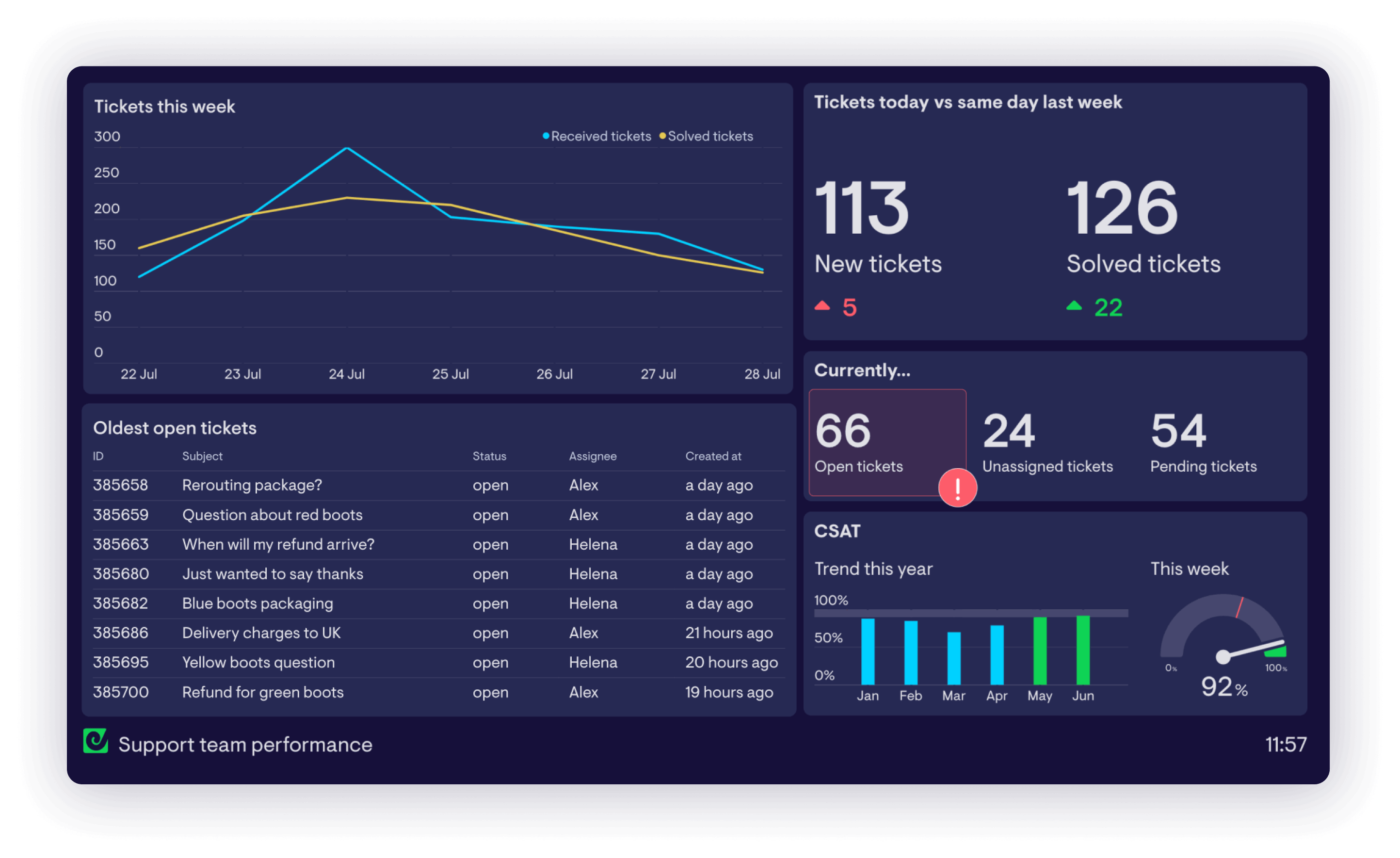
How to schedule Email snapshots
Click the ‘share’ button whilst logged in to Geckoboard, and select 'Email'.
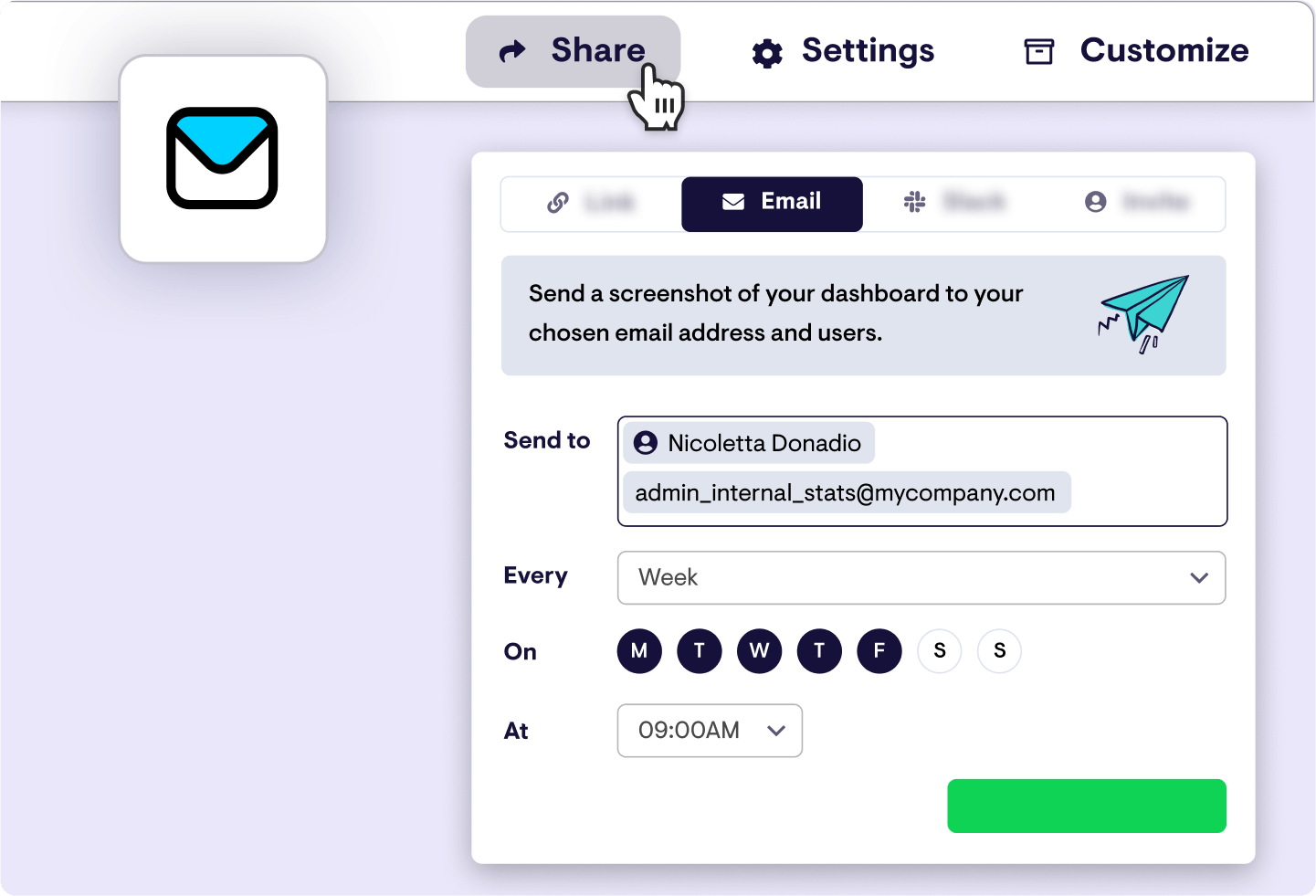
From there, you can configure:
- The email address(es) you want your snapshot to be delivered to. Hit the enter key after each one to add another
- The regularity of your snapshots
- The day(s) of the week you want your snapshots to be sent out on. You might not want to send them out on non-work days, for example, or just once a week if that’s your jam
- The time you want your snapshots to be sent out, and the timezone your dashboard should sync to
Hit ‘create’ to schedule your snapshot.
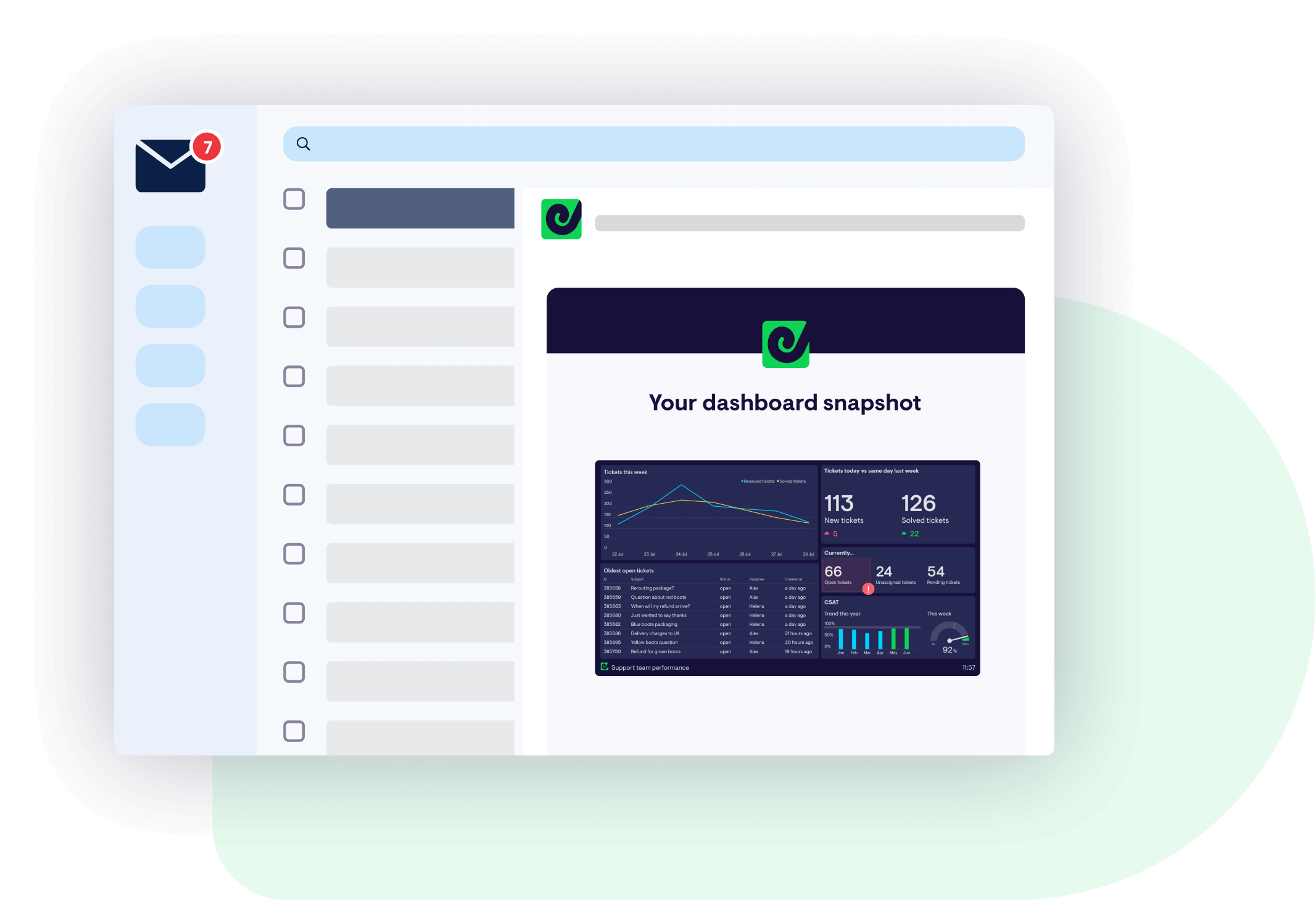
Slack snapshots
Sending snapshots of your dashboard to Slack is much the same as setting up an email snapshot.
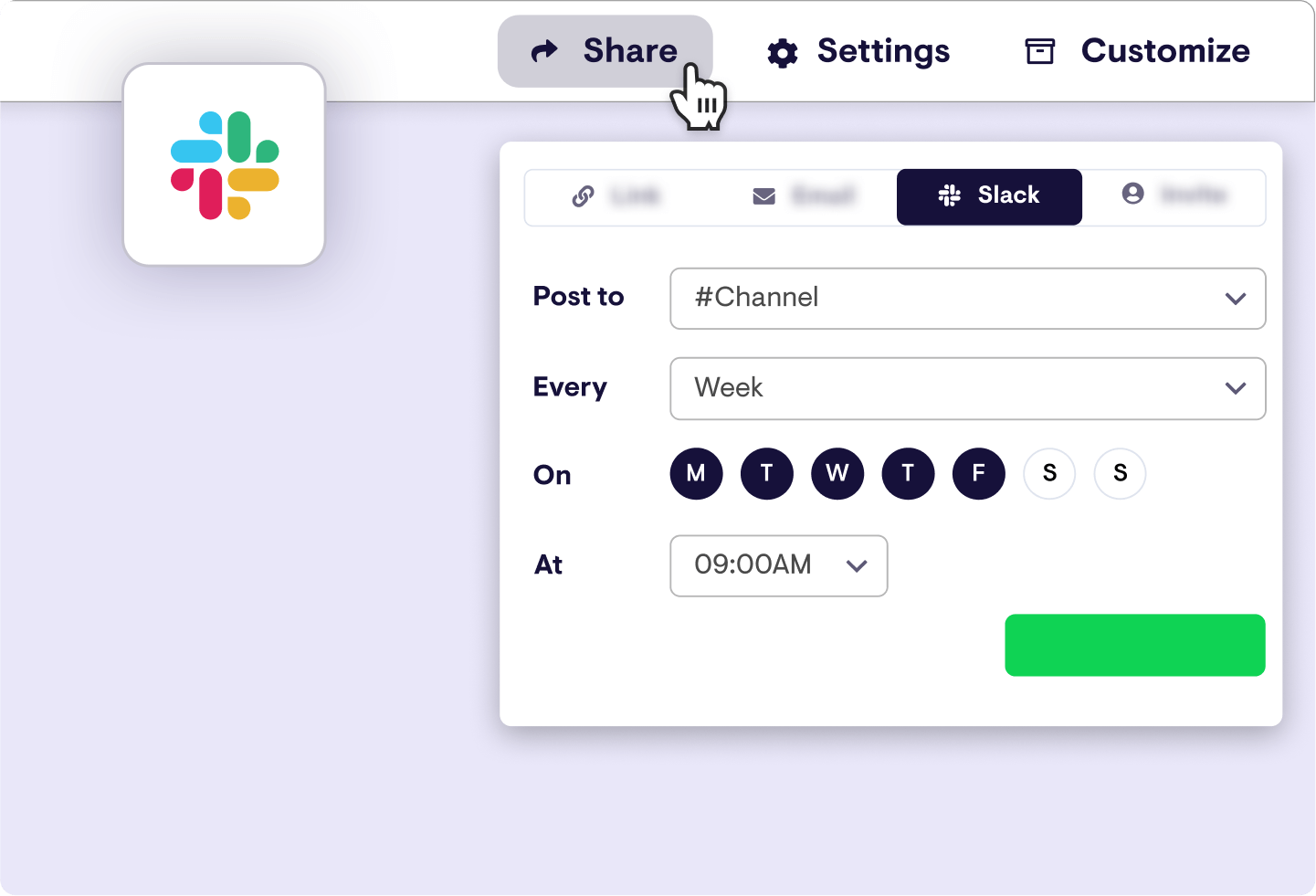
After clicking ‘Slack’ in the share menu, you’ll need to connect a Slack account if you haven't already. You’ll then have the options to configure:
- The Slack channel you want to send your snapshot to
- The regularity of your snapshots, the days of the week to send snapshots out, and the time
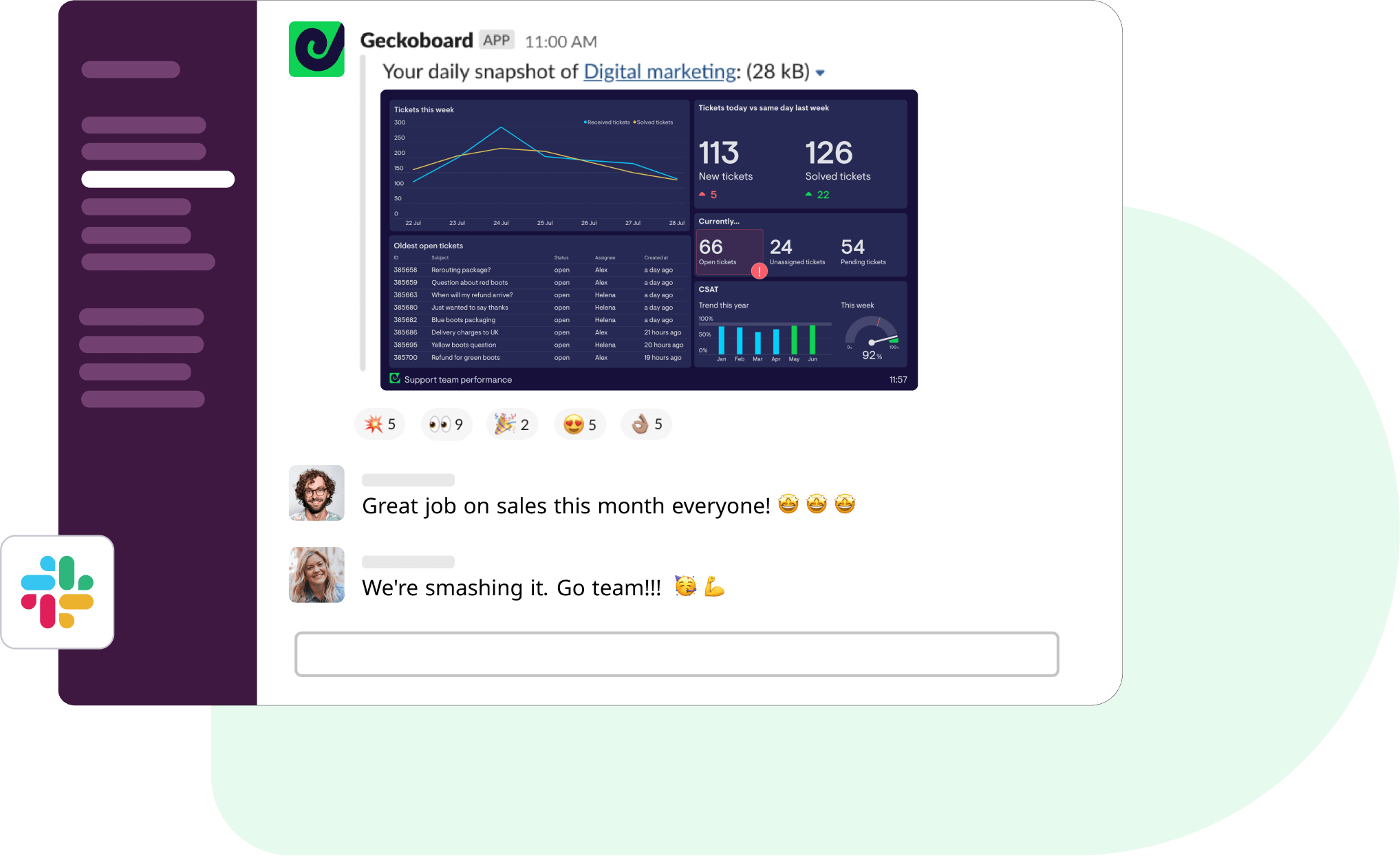
One of the benefits of posting snapshots to Slack is that it's very easy for others to add comments and spark a discussion around the data on the dashboard.
This can be a very powerful way to encourage your team to think about the data in their world, so it’s worth putting some thought into when might be the most effective times for your snapshots to surface. First thing in the morning before a team huddle or standup? Lunchtime, when everyone’s naturally taking some time out from the queue? Some teams even like to leave it until Friday afternoon to end the week with some friendly competition between agents…
When would it make sense for your team?
Try Geckoboard for free, and you can do much more than send snapshots of your Zendesk KPIs.
- Build dashboards using over 80 different data sources, including spreadsheets and databases
- Share dashboards as a link, or invite your team to build their own
- Display real-time dashboards on a TV or large screen - Zendesk wallboards made easy!
- Quickly drill into metrics and specific tickets from your dashboard
And much more! Sign up for your free 14 day trial here.
